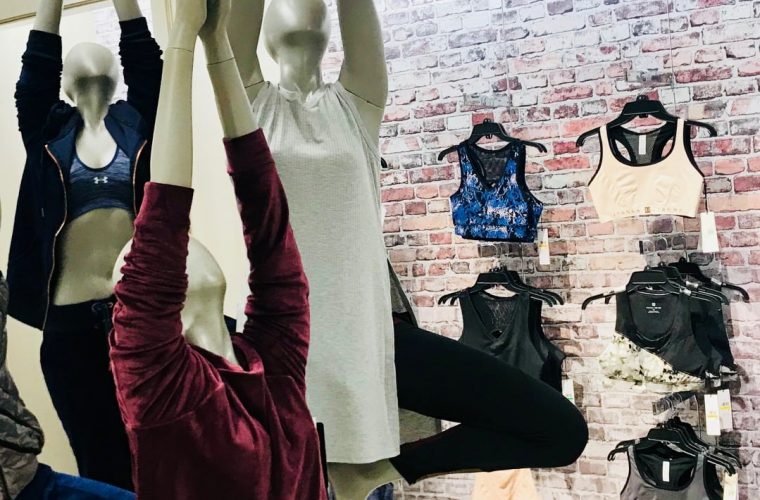
The In-Store Experience: It’s More than Visual
It takes all five. As retail marketers, we often focus on the visual elements of the store environment. However, consumers use all five senses to form reference points, opinions, and associations. Although sight is powerful, your in-store experience should also involve the remaining four senses. Each ignored human sense is a missed opportunity for communication.
Sensory marketing has the potential to increase sales, average transaction amount, and customer loyalty for retailers. It also provides an experience that cannot be duplicated by the Internet. An independent retailer can provide a positive sensory experience by understanding the five senses and making minor adjustments to leverage their value.
Seeing is Believing.
Vision is the most powerful of the senses used in marketing. It plays a significant role in the perception of a brand; in general, eyes do 70%-80% of buying.[1] The visual elements of a retail environment include color, lighting, layout, and merchandising materials.
Color increases brand recognition, which is directly linked to consumer confidence, by 80%.[2] Various colors affect shoppers differently. For example black, which is powerful and sleek, is often used to market luxury products. Green, which is the easiest for the eyes to process, is often used in relaxation. KISSmetrics provides a more complete listing of colors and their effects in a recent infographic, which you can reference here.
According to Zumtobel, a supplier of integral lighting solutions, light colors can also convey emotions and influence the perception of the space. Cool color temperatures, such as cool white, create the illusion of a larger space, whereas warm color temperatures create a more intimate environment.
Common “Scents”.
According to the Sense of Smell Institute, recall of visual images sinks to approximately 50% after only three months. However, people can generally recall smells with 65% accuracy after an entire year. Similarly, in the short term we remember 1% of what we touch, 2% of what we hear, 5% of what we see, 15% of what we taste, and 35% of what we smell.[3]
Scent marketing is often used in the residential real estate market. However, it can also be useful for retailers. Is there an experience, retail or non-retail, that you associate with a particular scent? I regularly attend yoga classes at a local studio. They use an independent line of room sprays and lotions to create a sensory experience. The scent is just strong enough to linger on my clothes after class. It stimulates feelings of satisfaction, tranquility, and anticipation for my next visit.
Consider your brand identity and the size of your space. Choose a scent that complements your visual experience and appeals to your audience. Carefully test your options and use strong scents sparingly in small spaces.
Sound Off.
Although we may not realize it, music and sound significantly impact our behavior as consumers. Can you recall what type of music was playing the last time you dined out? It likely had an effect on your transaction amount and duration of visit.
Past studies compared the effects of slow and fast music tempos on restaurant visits. In general, patrons exposed to slower tempos spent significantly more time dining than those exposed to fast tempos. Likewise, there was a clear trend towards higher spending during the slow music tempo.[4] Restaurateurs with limited table “inventory” can use this information to manage turnover during heavy and slow traffic periods.
Retailers that wish to apply this concept must also consider target market. For example, Abercrombie & Fitch’s loud club-style music appeals to its target, which primarily includes teens, young adults, and college students. However, it would likely not appeal to the fine jewelry market.
Great Taste.
Taste is generally more important for retailers that offer an edible product, but has its place in retail marketing.
Nonnie Waller’s Parlor is an independent retailer in Centerville, Ohio. In addition to gifts and apparel, they offer a variety of chocolates, cakes, and flowers. They also have a great tea and espresso bar with seating that encourages shoppers to linger longer. They routinely distribute samples of their award-winning chocolate. Flavor infused water, which is served from a large glass beverage dispenser, completes their refreshing retail experience.
Taste is also useful for cookware retailers. Williams-Sonoma is known for its product demonstrations, which often involve food, coffee, or other beverage samples. In addition to illustrating product capabilities, the demonstrations also provide a memorable sensory experience.
Retailers that offer exclusively non-edible products can enhance special in-store events by using the sense of taste.
Touch it Up.
Touch completes the sensory experience. It is perhaps the most important tool for identifying and manipulating an object, even in the absence of vision and sound. Shoppers use their sense of touch to identify a product’s temperature, texture, weight, and quality. Most products, including soft goods, cosmetics, skincare items, and electronics should be available to “test” and feel.
Furniture and seating can also be part of “touch”. The Kate Spade Boutique in Columbus, Ohio features an intimate seating area situated outside the dressing rooms. Patrons relax while waiting for sizes and trying on footwear. The chairs, which appeared to be custom upholstered, were functional, comfortable, and complementary to the brand experience. As an independent retailer, custom upholstery may not meet your budget. However, comfort is key. A trip to Home Goods could meet your needs.
In conclusion, shoppers form opinions and associations based on what they see, smell, hear, taste, and feel. Consider your space, product offering, and target market when formulating a sensory experience. Note the traffic volume, average visit duration, and average transaction amount prior to planning your experience. These are your benchmarks. Test various visual elements, scents, and music options. Observe the shopping experience, compare to your benchmarks, and continue to adjust as necessary.
Contributed by Melissa Molyneaux, the marketing director for BoutiqueVision.com, a website that provides printed signage, shopping bags and in-store marketing materials to independent retailers. The site’s mission is to provide the benefits of custom merchandising, without high volume requirements or agency expenses. Boutique Vision is fully owned by InnoMark Communications, a provider of custom visual merchandising solutions for major retailers and consumer packaged goods (CPG) clients. Molyneaux may be reached at Sales@BoutiqueVision.com, or 855-889-5362.
[1] Prateek Khanna, VSRD International Journal of Business and Management Research, Vol. 2 No. 12 December 2012, “Power of Senses in Branding and Its Impact on Consumers”
[2] KISSmetrics, “How Do Colors Affect Purchases?”














